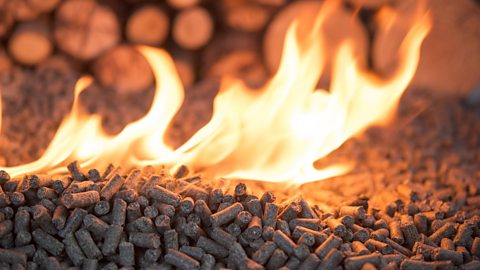Key points
Waves contain kinetic energy. By using turbines, the kinetic energy of waves can be transferred into electrical energy.
Wave power does not use up any fuels and so it is a great source of clean, renewable energy source.
Although the technology is still in development, Scotland has over six thousand miles of coastline, and the potential to generate lots of electricity from wave power.
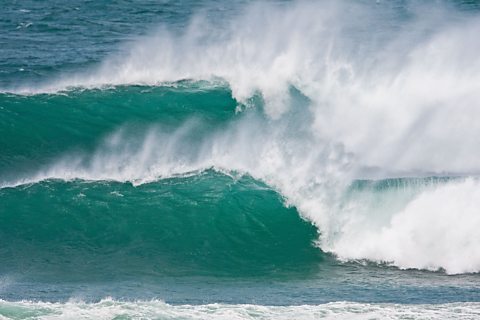
Wave power and its impact
Find out how the power of waves can be used to generate electricity for our homes.
Scotland has over six thousand miles of coastline, so we have a lot of wave energy that can be turned into electricity. Waves are created when the wind blows air across the surface of water. The moving air creates friction that pulls the water along, piling it up into waves. The more wind, the bigger the waves, and the bigger the waves, the more energy they have. This is kinetic energy - movement energy that can be used to generate electrical energy.
There are different ways of doing this. One way is to string together long lines of turbines that rely on the rise and fall of the wave. The turbines have a chamber that fills with water when a wave hits it. Water rushes in and pushes air out of the chamber, through a turbine. This turns the turbine blades which powers a generator and it is this that generates the electricity.
The North and west coast of Scotland is perfect for developing wave power. Strong winds blow across the Atlantic Ocean and could create big, powerful waves that reach all the way to our coastlines.
Wave energy still has a long way to go, compared to other renewable energies like wind or hydro. So, for the moment, we do not generate a lot of electricity from our waves, but the potential for wave energy is huge. Wave power doesn't need fuel. All that's needed is wind and water. There is no pollution generated and, once set up, the costs are low. But, there are a few drawbacks before we line out coasts with wave power stations.
The first is in the building process. That is difficult and expensive. Imagine trying to build a turbine with high winds, giant waves, and the dangers of being dragged out to sea. Building wave turbines can damage local marine ecosystems, as well as obstructing shipping, and being an eyesore. Even if we find a brilliant, efficient way to capture energy from waves, we will only get energy out if there is energy going in. So, on a calm day, no waves means no electricity.
So, with wave power still in its early days and currently only accounting for less than one percent of Scotland’s and renewable energy, do you think this will be the future of renewable energy?
Most waves are caused by wind blowing across the surface of the sea. Friction from moving air pulls water so that it forms ripples and waves.
The further waves travel with wind blowing over them for long periods, the taller they become and the more kinetic energy they have. This kinetic energy can be transferred into electrical energy.
How does it work?
Waves are created when the wind blows air across the surface of water. The stronger the wind, the bigger the waves.
And the bigger the waves the more kinetic energy they have.
Kinetic energy can be transferred into electrical energy by using turbines that rely on the movement of waves. The turbines transfer this kinetic energy to generators. When the generators spin, they transfer the kinetic energy to electrical energy.
There are lots of different types of device to turn wave energy into electricity. Three of the main types are called attenuators, absorbers and oscillator. Even though they look different, they all work using the same energy transfers.
Look through the sideshow to find out how the different devices work.
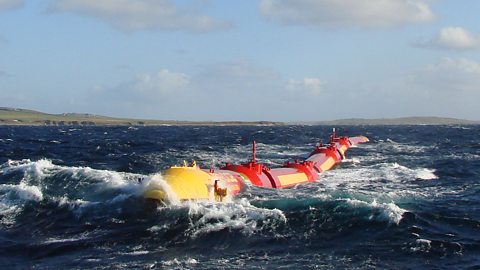
Image caption, Attenuator
An attenuator looks like a giant snake that floats on the surface of the water. It is made up of different parts that are joined together in a long line with its end facing into the waves. (Pelamis Wave Power)
Image caption, Attenuator
Waves cause each part to move separately pushing and pulling pistons between them. The moving pistons turn a generator and this produces electricity. (Cavan Images / Alamy Stock Photo)
Image caption, Absorber
This is an absorber being lowered into the sea. It has a round floating top with a long shaft underneath that is anchored to the sea bed. (Colin Keldie)
Image caption, Absorber
Waves make the floating top of the absorber bob up and down on the surface of the water. This pulls pistons up and down and these turn a generator that produces electricity. (Colin Keldie, courtesy of WES)
Image caption, Oscillator
At the surface of the sea, an oscillator looks like a long metal bar that moves back and forward with the passing waves. (Image of WaveRollerВ© courtesy of AW-Energy Oy)
Image caption, Oscillator
This illustration shows that the oscillator looks like a giant fan with a hinge on the sea floor. Waves fan the oscillator back and forth. This movement turns a generator that produces electricity. (Image of WaveRollerВ© courtesy of AW-Energy Oy)
1 of 6
Location factors

To generate electricity from waves, you first need access to waves - lots of them!
Scotland is a good location for developing wave power:
- The north and west of Scotland are exposed to wind and waves that have travelled long distances across the North Atlantic
- The east coast often experiences strong winds and large waves in autumn and winter
- Scotland also has many experienced engineers capable of working on this type of technology.
Sustainability
To develop a sustainable future you need to think about meeting today's needs and protecting theВ environmentМэІ№ІФ»еМэresourcesВ for the future.
Millions of pounds have been invested to research and develop wave power in Scotland but, just now, the search is still on to find the best technology for the job and, at the moment, we don’t generate much electricity from waves.
Advantages and disadvantages of wave power
Advantages
- Wave power is renewable since no fuel is needed. All that’s needed is wind and water.
- Wind and water are free, natural, and we have an infinite supply.
- It is clean as there is no pollution generated.
- Once set up, the costs are low.
Disadvantages
- Initial building costs are high and the process is difficult as turbines need to be built in high winds around giant waves.
- Building wave turbines can also have a damaging impact on local marine ecosystems.
- Turbines can obstruct shipping lanes.
- Some people think turbines destroy natural beauty of the coastline.
- It is not a reliable source of energy since on a calm day there will be no wind nor waves.
Test your knowledge
More on Energy sources and sustainability
Find out more by working through a topic
- count11 of 12
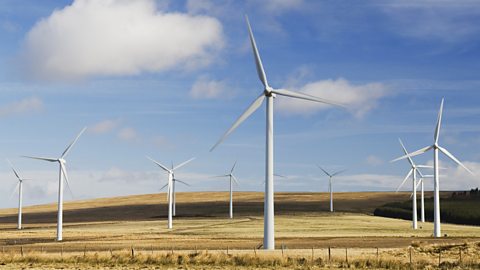
- count12 of 12
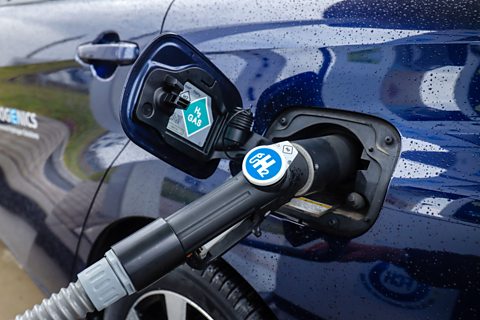
- count1 of 12
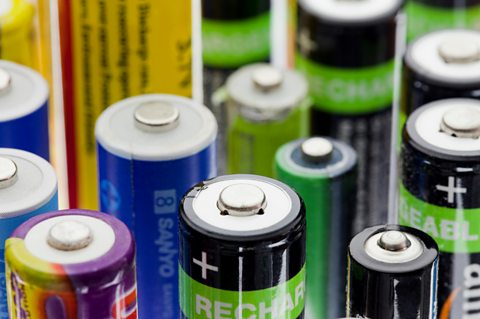
- count2 of 12
